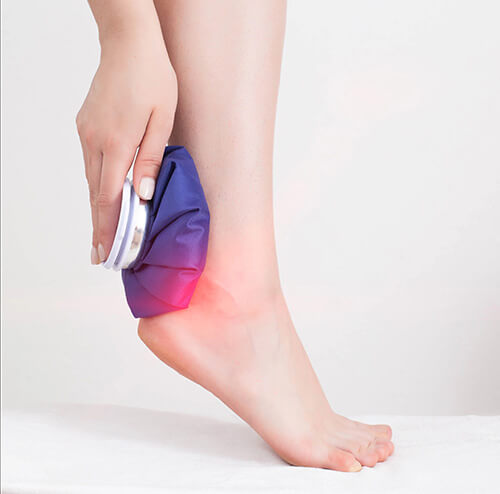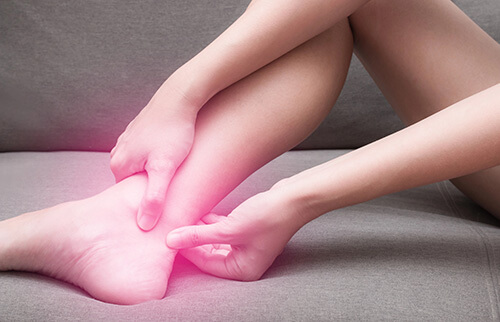Achilles Tendonitis is a common condition that affects the Achilles tendon, the band of tissue that connects the calf muscles to the heel bone. This tendon plays a crucial role in activities like walking, running, and jumping, making Achilles Tendonitis a particularly frustrating injury for those who lead an active lifestyle. In this post, we’ll explore what Achilles Tendonitis is, its symptoms, causes, and the most effective treatments.
What is Achilles Tendonitis?
Achilles Tendonitis occurs when the Achilles tendon becomes inflamed, leading to pain and stiffness in the back of the leg. This condition is usually the result of overuse, particularly in athletes and active individuals who put a lot of stress on their lower legs. There are two main types of Achilles Tendonitis:
- Insertional Achilles Tendonitis: This type occurs at the point where the tendon meets the heel bone.
- Non-insertional Achilles Tendonitis: This type affects the middle portion of the tendon, typically occurring in younger, more active individuals.
Symptoms of Achilles Tendonitis
The symptoms of Achilles Tendonitis can vary in severity, but common signs include:
- Pain and stiffness: Pain in the back of the heel or lower leg, especially after physical activity or first thing in the morning.
- Swelling: The area around the Achilles tendon may become swollen and warm to the touch.
- Limited range of motion: Difficulty flexing the foot or pushing off the toes when walking or running.
- Tenderness: The tendon may feel tender when touched or squeezed.
Causes of Achilles Tendonitis
Achilles Tendonitis is most often caused by repetitive stress on the tendon. Several factors can contribute to the development of this condition:
- Overuse: Repetitive activities like running, jumping, or intense exercise can strain the Achilles tendon.
- Sudden increase in activity: A rapid increase in the intensity or duration of physical activity can lead to tendonitis.
- Poor footwear: Wearing shoes that do not provide adequate support or cushioning can increase the risk.
- Tight calf muscles: Limited flexibility in the calf muscles can put additional strain on the Achilles tendon.
- Bone spurs: Insertional Achilles Tendonitis can be caused by bone spurs on the heel, which irritate the tendon.
Treatments for Achilles Tendonitis
Treating Achilles Tendonitis often involves a combination of self-care, physical therapy, and, in some cases, medical interventions.

Here are some of the most effective treatments:
- Rest and Activity Modification: Reducing or avoiding activities that aggravate the tendon is crucial. Switching to low-impact exercises like swimming or cycling can help maintain fitness while allowing the tendon to heal.
- Ice Therapy: Applying ice to the affected area for 15-20 minutes several times a day can help reduce pain and inflammation.
- Stretching and Strengthening Exercises: Physical therapy often includes exercises to stretch and strengthen the calf muscles and Achilles tendon. Eccentric strengthening exercises, in particular, have been shown to be effective.
- Proper Footwear: Wearing shoes with good arch support and cushioning can help reduce strain on the Achilles tendon. Orthotic inserts may also be recommended.
- Anti-inflammatory Medications: Over-the-counter nonsteroidal anti-inflammatory drugs (NSAIDs) like ibuprofen can help reduce pain and inflammation.
- Heel Lifts: Using heel lifts in your shoes can reduce stress on the Achilles tendon by taking pressure off the heel.
- Corticosteroid Injections: In some cases, a doctor may recommend corticosteroid injections to reduce inflammation. However, this should be done with caution, as it can weaken the tendon.
- Surgery: In severe cases, where conservative treatments do not provide relief, surgery may be necessary to remove damaged tissue or repair the tendon.
Preventing Achilles Tendonitis

Preventing Achilles Tendonitis involves taking proactive steps to protect your tendon:
- Warm-up and stretch: Always warm up before exercising and incorporate stretching into your routine to keep your calf muscles flexible.
- Gradual progression: Increase the intensity and duration of your physical activities gradually to avoid sudden stress on the tendon.
- Wear proper footwear: Choose shoes that offer adequate support, especially if you engage in high-impact activities.
Achilles Tendonitis can be a painful and debilitating condition, but with proper care and treatment, it is possible to recover and return to your normal activities. If you experience persistent pain in your Achilles tendon, it’s important to consult with a Pedorthist or other foot care provider to determine the best course of action. By understanding the causes and symptoms of Achilles Tendonitis, you can take steps to prevent it and manage it effectively if it does occur.

